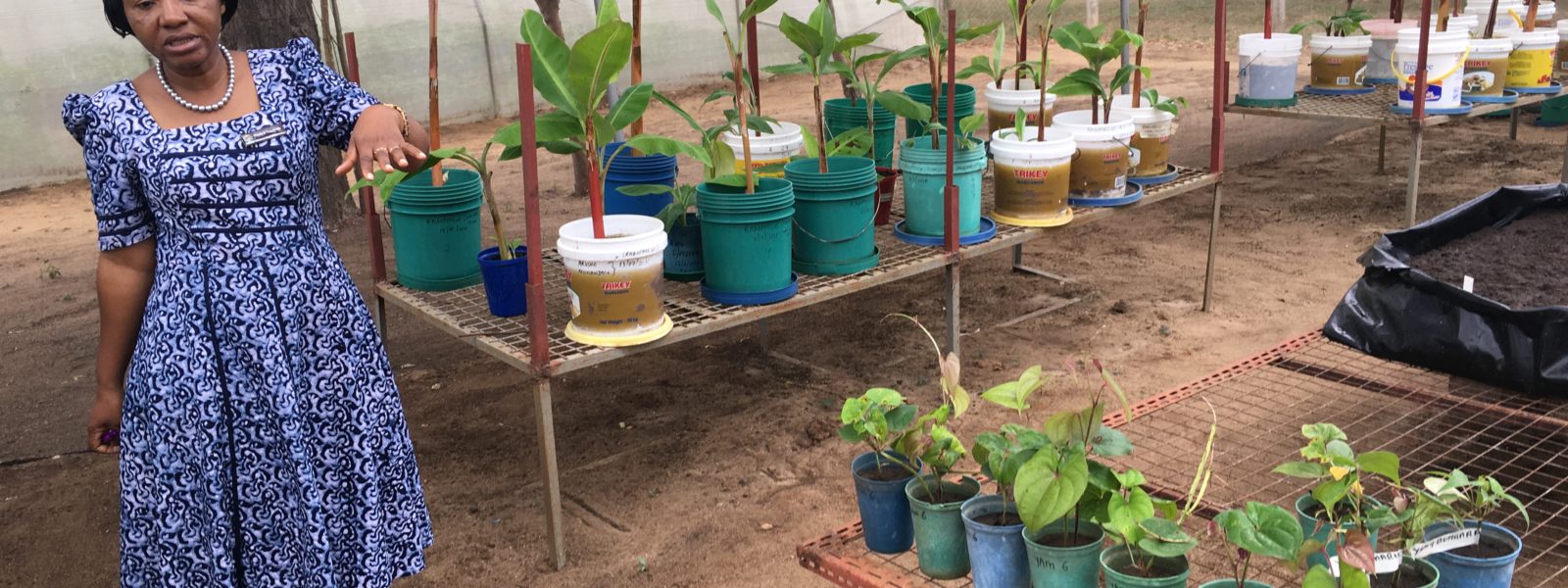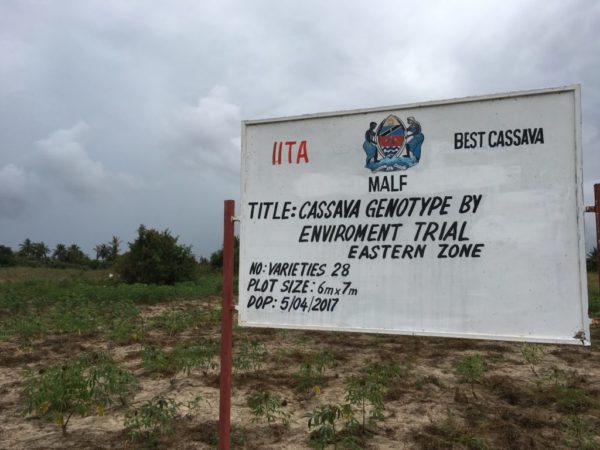By Graham Thiele, Director, CGIAR Research Program on Roots, Tubers and Bananas (RTB)
Judging by the name, the Sugarcane Research Institute of Tanzania is not the first place one would expect to find research on roots, tubers and bananas. However, as members of RTB’s Independent Steering Committee discovered on our recent visit, the principle focus of research at the institute is on cassava and sweetpotato, for which they have the mandate for Eastern Agro-ecological Zone of Tanzania.
Dr. Kiddo Mtunda, Director of the Sugarcane Research Institute (SRI), explained that whilst it’s important to keep “sugar cane” in the institute’s name because of support from the sugar industry, in practice much of the work at the station is on roots and tubers, which began in 1989. Research work on sugarcane started in 1971 and is done at the sugarcane plantations closer to the growers.
A partner of RTB, the institute has a dedicated ‘Root and Tuber Crops Research Programme’, which is wide ranging, including participatory varietal selection, production of breeder and pre-basic seed and post-harvest value added. Dr. James Legg, Plant Health Specialist at the International Institute of Tropical Agriculture (IITA) and leader of RTB’s flagship project on ‘Resilient Crops’, explained that there is a very close collaboration between researchers at SRI and both International Potato Center (CIP) and IITA scientists.
During the RTB Independent Steering Committee’s visit, which followed the committee’s annual meeting, members were fortunate to visit labs and fields at Kibaha. The first stop was the Nematology lab, where Dr. Nessie Luambano explained that she had completed her PhD in plant nematology and was currently conducting a project on the diversity of three banana nematodes species and susceptibility to nematodes of different banana varieties from major banana growing areas of Tanzania.
Many staff at SRI wear several hats! Dr. Luambano also works with sweetpotato and she explained that one of the activities underway is to generate revenue and create a self-sustaining business at SRI with pre-basic seed.
She went on to explain that clean material, from Kenya Plant Health Inspectorate Service, was multiplied with support from the Sweet Potato Action for Security and Health in Africa project (with CIP) and distributed as pre-basic seed Importantly, the Tanzania Official Seed Certification Institute (TOSCI) inspects the pre-basic seed including virus testing at the Mikocheni Agricultural Research Institute laboratory. SRI sells the pre-basic seed on to multipliers. It’s encouraging that demand for this is increasing.
Dr. Luambano also said that SRI is carrying out a full costing of seed production with support from CIP scientists as part of a CIP project on building seed businesses with the public sector.
SRI also works on cassava seed systems with a rapid multiplication method using two node cuttings supported by USAID. There has been a shared learning across different crops with IITA and CIP collaboration promoted by RTB’s research cluster on seed. As Dr. Simon Heck, leader of RTB’s flagship project on ‘Nutritious food and added value’ noted, “We all dance together on this!”
The next port of call was to see research carried out by Dr Esther Masumba. Dr Masumba is collaborating with the DSMZ Plant Virus Department in Germany with five genotypes from Latin America that reputedly have immunity to cassava brown streak disease (CBSD). Dr Masumba is looking for quantitative trait loci (QTLs) for immunity, and a next stage in the research will involve a crossing block for cassava breeding in Dodoma District, Tanzania.
Then the ISC got back on the bus to visit cassava trials of SRI at the Chambezi substation. This is a high disease pressure area for cassava with problems of green mite, cassava mosaic disease (CMD) and CBSD.
We saw materials from the “New Cassava varieties and Clean seed to Combat CBSD and CMD” (5CP) project – a regional initiative which brought together five African countries. Now concluded, 5CP was a unique project where the best five varieties/clones for CBSD resistance were pooled from each participating country, plus three controls, then all 28 were shared with all countries through tissue culture. Altogether evaluation trials like these are being conducted at 33 sites in the five countries.
We then saw a cassava seed degeneration trial. This included a) Kikombe, a variety susceptible to CBSD and b) Kiroba, a variety resistant to CBSD but susceptible to CMD. The trial compared planting in two rainy seasons, one with shorter periods of rainfall with many whitefly present (which transmit the virus), and the second with longer periods of rainfall and less insects.
So far, the trial has run for four seasons during the long rains and three seasons in short rains. In the shorter season, CBSD had reached 30-60% incidence. Dr. Legg explained that previously the difference between seasons had not been well understood, and as cassava is mostly grown in the short rainy season, the trial concluded that it would be advantageous to switch to farming during the long rainy season. A simple solution that could make a big difference for small-scale farmers! The degeneration trials are part of a suite of degeneration studies with RTB supported by modelling by the University of Florida.
This was an excellent visit and the ISC committee members were very interested to learn more about the research being done by our partners at SRI. Dr. Rupert Best, the ISC chair commented “although the name highlights sugarcane, this was a perfect visit from an RTB perspective, showcasing collaboration with an important partner and spanning most of our crops.” Dr. Barbara Wells, Director General of CIP added that “we were hugely impressed to see so many dynamic women scientists coming to the fore.”

